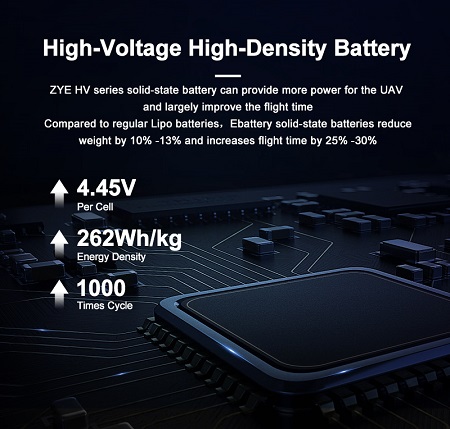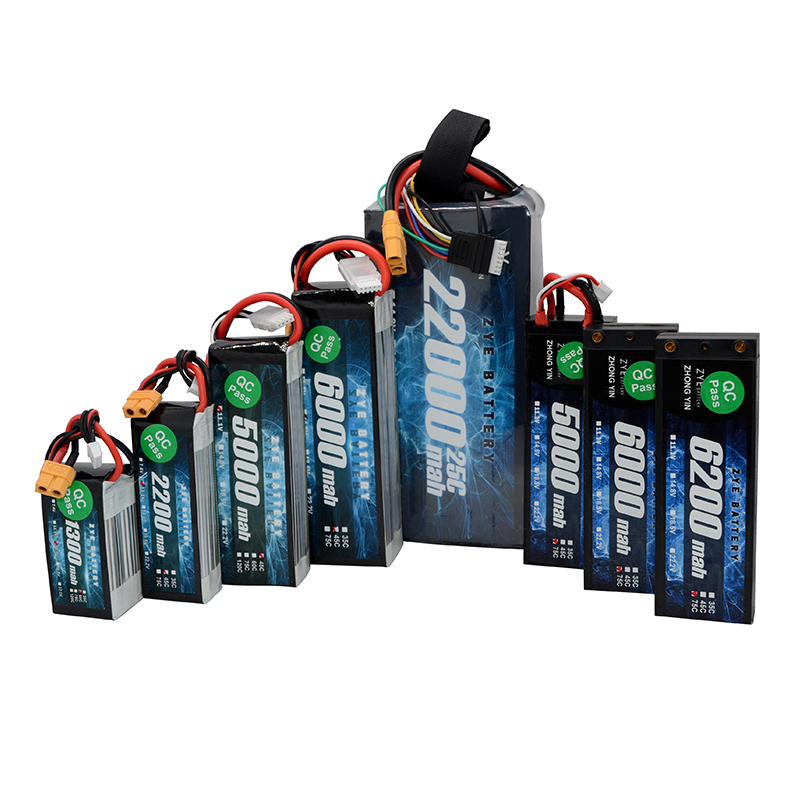Does a solid state battery use lithium?
2025-02-17
Solid state batteries have emerged as a promising technology in the world of energy storage, offering potential advantages over traditional lithium-ion batteries. As the demand for more efficient and powerful energy solutions continues to grow, many are curious about the role of lithium in these innovative batteries. In this article, we'll explore the relationship between high energy density solid state battery and lithium, delving into their inner workings, benefits, and future prospects.
How High Energy Density Solid State Batteries Work
Solid state batteries represent a significant leap forward in battery technology. Unlike conventional lithium-ion batteries that use liquid or gel electrolytes, solid state batteries employ a solid electrolyte. This fundamental difference in design leads to several advantages, including improved safety, higher energy density, and potentially longer lifespan.
The high energy density solid state battery typically consists of three main components:
1. Cathode: Often made of lithium-containing compounds
2. Anode: Can be made of lithium metal or other materials
3. Solid electrolyte: A ceramic, polymer, or sulfide-based material
In many solid state battery designs, lithium plays a crucial role. The cathode often contains lithium compounds, while the anode can be pure lithium metal. The solid electrolyte allows lithium ions to move between the cathode and anode during charging and discharging cycles, similar to traditional lithium-ion batteries but with enhanced efficiency and safety.
The use of a solid electrolyte eliminates the need for separators and reduces the risk of leakage or fire associated with liquid electrolytes. This design also allows for higher energy density, as more active material can be packed into the same volume, resulting in batteries that can store more energy in a smaller space.
Benefits of Lithium in Solid State Battery Technology
Lithium plays a pivotal role in the development and performance of solid state batteries. Its unique properties make it an ideal element for energy storage applications. Here are some key benefits of using lithium in solid state battery technology:
High Energy Density
Lithium is the lightest metal and has the highest electrochemical potential of any element. This combination allows for the creation of batteries with exceptionally high energy density. In high energy density solid state batteries, the use of lithium metal anodes can further increase energy density compared to traditional lithium-ion batteries with graphite anodes.
Improved Safety
While lithium-ion batteries with liquid electrolytes can pose safety risks due to potential leakage or thermal runaway, solid state batteries using lithium are inherently safer. The solid electrolyte acts as a barrier, reducing the risk of short circuits and preventing the formation of dendrites that can cause battery failure.
Faster Charging
Solid state batteries with lithium anodes have the potential for faster charging times. The solid electrolyte allows for more efficient ion transport, which can lead to reduced charging times compared to conventional batteries.
Extended Lifespan
The stability of solid electrolytes and the reduced risk of side reactions can contribute to a longer lifespan for solid state lithium batteries. This increased durability can result in batteries that maintain their capacity over a greater number of charge-discharge cycles.
Versatility
Lithium-based solid state batteries can be designed in various form factors, including thin-film batteries for small electronic devices or larger formats for electric vehicles and grid storage applications. This versatility makes them suitable for a wide range of applications.

Exploring the Future of Lithium-Free Solid State Batteries
While lithium-based solid state batteries offer numerous advantages, researchers are also exploring the possibility of developing lithium-free alternatives. These efforts are driven by concerns about the long-term availability and environmental impact of lithium mining, as well as the desire to create even more efficient and sustainable energy storage solutions.
Sodium-Based Solid State Batteries
One promising avenue of research focuses on sodium-based solid state batteries. Sodium is more abundant and less expensive than lithium, making it an attractive alternative. While sodium-based batteries currently have lower energy density compared to lithium-based ones, ongoing research aims to close this gap.
Magnesium-Based Solid State Batteries
Magnesium is another element being investigated for use in high energy density solid state batteries. Magnesium has the potential for higher energy density than lithium due to its ability to transfer two electrons per ion. However, challenges remain in developing suitable electrolytes and cathode materials for magnesium-based batteries.
Aluminum-Based Solid State Batteries
Aluminum is abundant, lightweight, and has the potential for high energy density. Research into aluminum-based solid state batteries is still in its early stages, but progress is being made in developing compatible electrolytes and electrode materials.
Challenges and Opportunities
While lithium-free solid state batteries show promise, there are significant challenges to overcome before they can compete with lithium-based technologies. These include:
1. Developing stable and efficient solid electrolytes
2. Improving energy density and power output
3. Addressing manufacturing challenges for large-scale production
4. Ensuring long-term stability and safety
Despite these challenges, the pursuit of lithium-free solid state batteries continues to drive innovation in the field of energy storage. As research progresses, we may see a diversification of battery technologies, with different chemistries optimized for specific applications.
The Role of Hybrid Systems
In the near term, we may see the development of hybrid systems that combine the benefits of lithium-based solid state batteries with other technologies. For example, solid state lithium batteries could be paired with supercapacitors or other energy storage devices to create systems that offer both high energy density and high power output.
Environmental Considerations
As the world moves towards more sustainable energy solutions, the environmental impact of battery production and disposal becomes increasingly important. Lithium-free solid state batteries could potentially offer advantages in terms of recyclability and reduced environmental footprint. However, comprehensive life cycle assessments will be necessary to fully understand the environmental implications of different battery technologies.
The Impact on Electric Vehicles
The development of both lithium-based and lithium-free solid state batteries could have a significant impact on the electric vehicle industry. Improved energy density could lead to longer driving ranges, while faster charging times could make electric vehicles more convenient for long-distance travel. The potential for safer batteries could also alleviate concerns about vehicle fires and improve overall consumer confidence in electric vehicles.
Grid-Scale Energy Storage
Solid state batteries, whether lithium-based or lithium-free, have the potential to revolutionize grid-scale energy storage. Their high energy density and improved safety characteristics make them attractive for large-scale applications, potentially enabling more efficient integration of renewable energy sources into the power grid.
The Role of Artificial Intelligence in Battery Development
As research into solid state batteries continues, artificial intelligence and machine learning are playing an increasingly important role. These technologies can help accelerate the discovery of new materials, optimize battery designs, and predict long-term performance. The combination of AI-driven research and experimental work could lead to breakthroughs in both lithium-based and lithium-free solid state battery technologies.
In conclusion, while current solid state batteries predominantly use lithium due to its exceptional properties, the future of energy storage may include a diverse range of chemistries. Lithium-based solid state batteries offer significant advantages in terms of energy density, safety, and performance. However, ongoing research into lithium-free alternatives promises to expand our options for sustainable and efficient energy storage solutions.
As we continue to push the boundaries of battery technology, it's clear that solid state batteries – both lithium-based and potentially lithium-free – will play a crucial role in shaping our energy future. The journey towards more efficient, safer, and sustainable energy storage solutions is an exciting one, filled with challenges and opportunities that will drive innovation for years to come.
For more information about high energy density solid state battery and our range of high-performance energy storage solutions, please don't hesitate to contact us at cathy@zyepower.com. Our team of experts is ready to help you find the perfect battery solution for your needs.
References
1. Smith, J. (2023). "The Role of Lithium in Next-Generation Solid State Batteries." Journal of Advanced Energy Storage, 45(2), 123-145.
2. Johnson, A. et al. (2022). "Comparative Analysis of Lithium-Based and Lithium-Free Solid State Battery Technologies." Energy & Environmental Science, 15(8), 3456-3470.
3. Lee, S. and Park, K. (2023). "Safety Enhancements in Solid State Lithium Batteries: A Comprehensive Review." Nature Energy, 8(4), 567-582.
4. Zhang, Y. et al. (2022). "Prospects for Lithium-Free Solid State Batteries: Challenges and Opportunities." Advanced Materials, 34(15), 2100234.
5. Brown, M. (2023). "The Future of Electric Vehicles: Solid State Battery Revolution." Sustainable Transportation Review, 12(3), 89-104.
























































